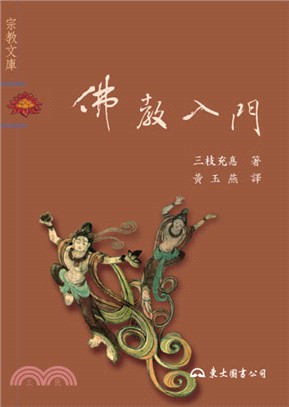定價
:NT$ 9900 元若需訂購本書,請電洽客服 02-25006600[分機130、131]。
相關商品
商品簡介
作者簡介
商品簡介
This new edition of Animal Models in Cardiovascular Research describes historical and recent advances in our understanding of the cardiovascular system from studies conducted in a variety of animal models. Since the last edition we have witnessed an explosion in the use of both congenic and transgenic animals. The use of specific knock-in and knock-out transgenic models has resulted in an avalanche of genetic, molecular and protein-based information that, potentially, could result in an amazing new array of treatment and management options. However, the results of these studies also introduce a sometime bewildering array of redundant, overlapping and competing molecular pathways involved in both physiological and pathological responses. This third edition is designed to provide a better basis for understanding and using animal models in the current climate of background knowledge and information. It is significantly different than the previous two editions. Chapter 1 is updated from the previous editions addressing general principles of animal selection. It also provides expanded tables of normal physiological values for easy reference. Chapter 2 covers preoperative care, pre-anesthesia, chemical restraint, and includes a significantly expanded section on pain recognition and analgesia particularly in rodents. Chapter 3 provides a summary of normal cardiovascular parameters obtained from intact, awake animals. The data have been rearranged in outline rather than the previous tabular form hopefully resulting in easier reference. Chapter 4 addresses the techniques, problems and pitfalls of measuring cardiac function in animals. There is an emphasis on the proper use of these measurements to develop new treatment and management strategies as well as using them to study mechanisms of disease. Chapter 5 emphasizes the techniques, problems and pitfalls involved in the measurement of arterial function and ventricular/arterial coupling dynamics. Again the emphasis is on the use of these parameters to develop new treatment and management strategies and for studying the mechanisms of disease. Chapter 6 is a all new chapter dealing specifically with the problems and pitfalls inherent in using isolated heart preparations. The need for this chapter became apparent because so much information was published using obviously non-physiologic preparations. The use of both pumping and non-pumping preparations are described along with techniques necessary for using hearts from larger species where oxygen carrying capacity of the perfusate is critical. The importance of hypoxia and anoxia in the interpretation of results is discussed. Chapter 7 focuses on the cardiovascular effects of the post-operative analgesic drugs commonly used today and how to avoid potential problems resulting from these effects when reporting experimental data. These data are also presented in outline form rather than the tabular format used in the two previous editions. Chapter 8 addresses the use of naturally occurring animal models of valvular and infectious cardiovascular disease. The information presented has been updated and expanded from the second edition. Chapter 9 examines iatrogenic models of ischemic heart disease. Chapter 10 is new. It provides a review of iatrogenic, transgenic and naturally occurring animal models of cardiomyopathy and heart failure. Chapter 11 includes new, updated and revised information reviewing iatrogenic and transgenic models of hypertension. Chapter 12 contains new, and updated information on iatrogenic and transgenic models of atherosclerotic disease. Chapter 13 is completely new material dealing with animal models for the study of neurohumeral and central nervous system control of the cardiovascular system. Chapter 14 is also new. It provides examples of cardiovascular studies involving the use of specific transgenic models not normally associated with the cardiovascular system, such as estrogen receptor knockouts, to study cardiovascular function.
作者簡介
Dr. David R. Gross entered private veterinary practice after earning the DVM degree from Colorado State University in 1960. In 1974 he was awarded the PhD degree in physiology from the Ohio State University beginning a 36-year career in academics that culminated as professor and head of the Department of Veterinary Biosciences in the College of Veterinary Medicine, University of Illinois, Urbana-Champaign. Dr. Gross’ research career encompassed 58 funded projects totaling over $5.5 million and 91 papers published in refereed journals using a wide variety of animal models. Ironically his three most-cited research papers received no external funding. He and his colleagues showed that feeding dietary cholesterol to rabbits induced Alzheimer’s-like lesions in the brain. Their work also showed that surgery involving cardiopulmonary bypass resulted in Alzheimer’s-like brain lesions in pigs. With another group of colleagues he helped pioneer minimally invasive coronary artery bypass grafting techniques using the pig as a model.
主題書展
更多
主題書展
更多書展本週66折
您曾經瀏覽過的商品
購物須知
外文書商品之書封,為出版社提供之樣本。實際出貨商品,以出版社所提供之現有版本為主。部份書籍,因出版社供應狀況特殊,匯率將依實際狀況做調整。
無庫存之商品,在您完成訂單程序之後,將以空運的方式為你下單調貨。為了縮短等待的時間,建議您將外文書與其他商品分開下單,以獲得最快的取貨速度,平均調貨時間為1~2個月。
為了保護您的權益,「三民網路書店」提供會員七日商品鑑賞期(收到商品為起始日)。
若要辦理退貨,請在商品鑑賞期內寄回,且商品必須是全新狀態與完整包裝(商品、附件、發票、隨貨贈品等)否則恕不接受退貨。
























